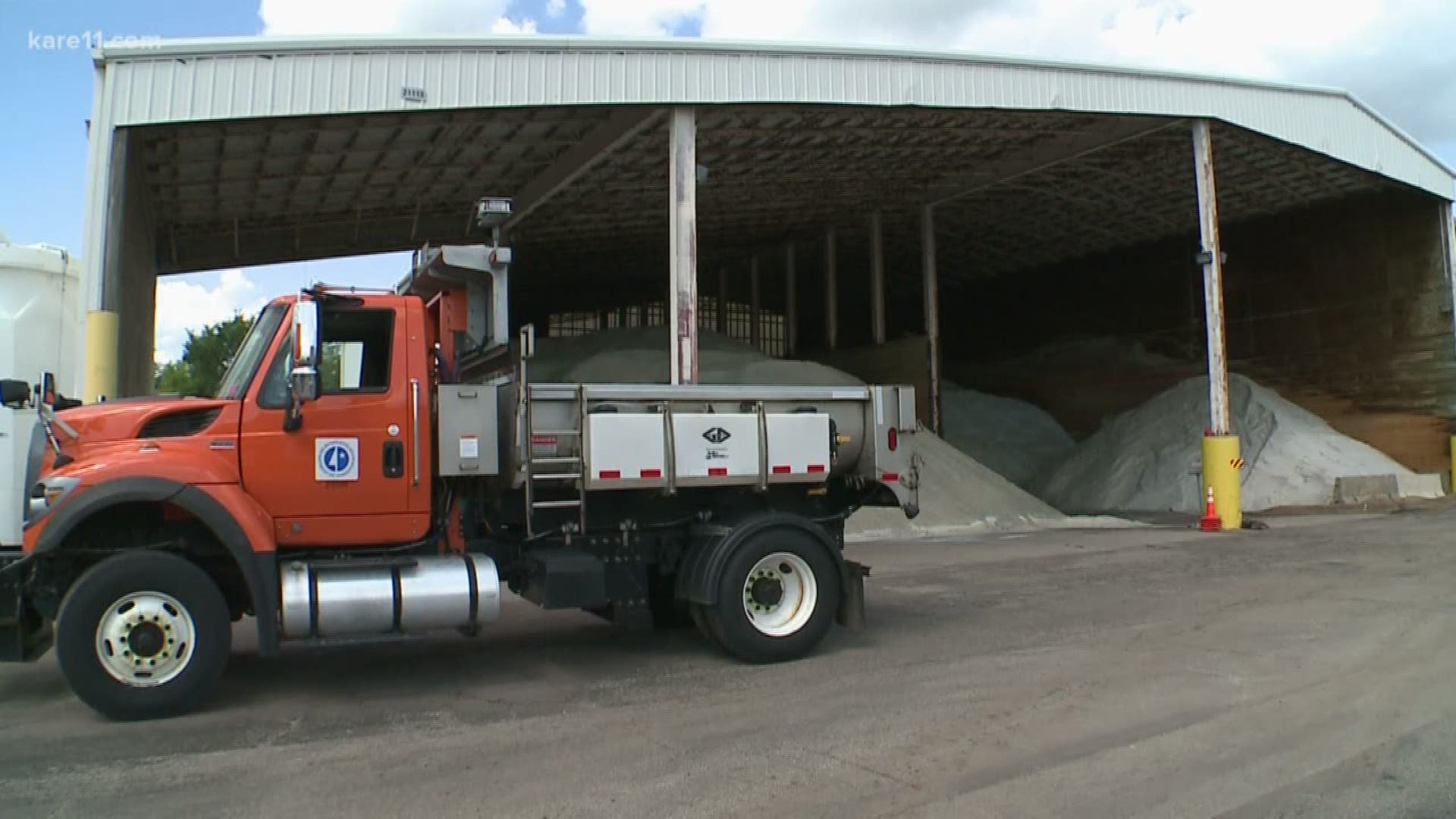MINNEAPOLIS — Minnesota needs to go on a salt diet.
The Minnesota Pollution Control Agency spent this spring and summer traveling around the state, sharing a draft of its Statewide Chloride Management Plan with a goal of salt reduction to protect the state’s water resources.
“It doesn’t break down over time, so essentially, it is a permanent pollutant. So whatever salt we put on our roads or put in our water softeners or use as fertilizer is going to stay essentially in Minnesota in our waters,” said Brooke Asleson, chloride coordinator, MPCA.
Beyond her official title, Asleson says she has been given the title “salt lady,” and it’s no wonder, considering her knowledge of the issue.
“It only takes 1 teaspoon of salt in 5 gallons of water, so it does not take a lot to cause some permanent damage to our waters,” Asleson said.
The damage has been done. Fifty water bodies meet the 1-teaspoon-per-5-gallon threshold, which means they are impaired. Seventy-five more are high risk.
“A lot of people don’t understand that the chloride in salt is actually toxic to fish and insects living in our waterways,” Asleson said.
Minnehaha Creek among impaired metro streams
A Minneapolis jewel, Minnehaha Creek, is among the 50 impaired water bodies, but those managing the stream are not giving up.
Twenty times a year, Minnehaha Creek Watershed District crews wade into the creek in roughly 40 locations to measure for chloride in a watershed that is fed by 29 communities.
“We really want to figure out exactly what’s going on in our system because that’s what helps us figure out the solution to the problem,” said Brian Beck, water quality program manager, Minnehaha Creek Watershed District.
MnDOT seeks salt solutions
MnDOT has had a salt solutions program in place more than 15 years, according to Joe Huneke, transportation program supervisor.
Adding liquids to salt and center-of-the-road salting help improve efficiency. MnDOT also uses a computer system, which includes data from the trucks, that incorporates road and weather information into salting decisions.
“You want to be good stewards of the environment; you want to keep your costs down, but you don’t want to do it at the expense of safety,” Huneke said.
MnDOT and the MPCA are having healthy salt-reduction discussions. But Asleson also notes public demand helps fuel road salting.
“Continuing to provide bare pavement is going to be a struggle long term for our water resources,” Asleson said.
Residents can also reduce salt
Minnesotans can join in the salt-reduction effort. Asleson encourages residents to cut back when salting the driveway.
Beyond that, salt can even be re-used.
Dakota County Stormwater Specialist Mike Behan says residents should sweep up salt after its work is done and use it for the next winter storm.
Fresh Water
Ultimately, the salt-reduction push is about Minnesota’s waters, the fish and insects.
“Our fresh water species prefer to have fresh water - not salty water,” Asleson said.

